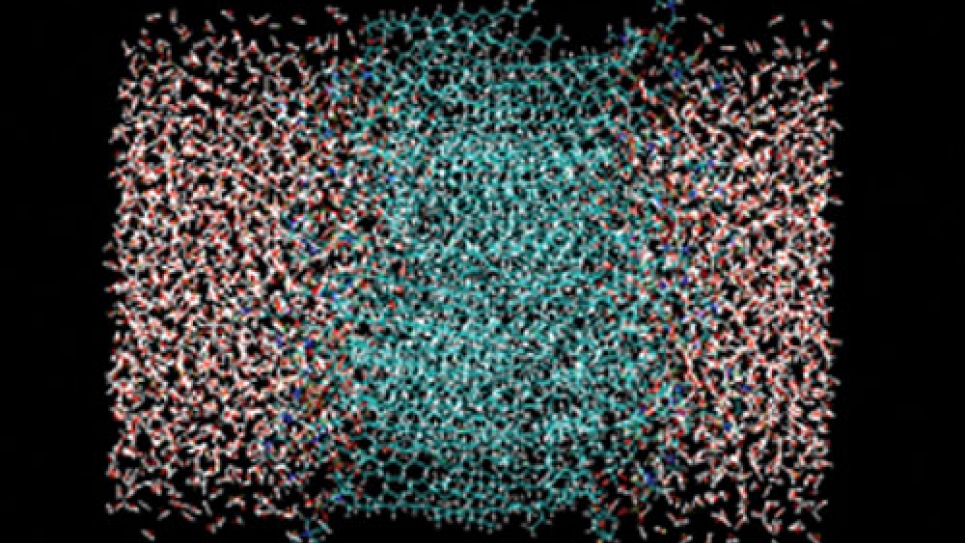
NAMD - The Engine for Large-Scale Classical MD Simulations of Biomolecular Systems Based on a Polarizable Force Field
Biology, at the atomic and molecular level, is governed by complex interactions involving a large number of key constituents, including water, ions, proteins, nucleic acids, and lipid membranes. The goal of this project is to develop new technologies to simulate virtual models of biomolecular systems with an unprecedented accuracy. Large-scale molecular dynamics (MD) simulations based on atomic models play an increasingly important role in the life sciences. Success with MD simulations of large-scale biomolecular systems hinges on the accuracy of the potential function and the efficiency of the dynamic propagation algorithm for adequate sampling of motions.
This project is focused on the program NAMD, currently one of the most optimal and efficient programs to carry out classical simulations of biomolecular systems. To enhance the sampling efficiency beyond that of brute-force MD simulations, researchers propose to implement several advanced strategies based on multiple copies such as replica-exchange MD (REMD) and/or Hamiltonian tempering (H-REMD). Because the quality and accuracy of the potential function (force field) is critical for meaningful MD simulations, the researchers will implement a new force field that incorporates the effect of induced polarization. They will carry out simulations covering a wide range of canonical and non-canonical DNA and RNA molecules for which a wealth of experimental data is available. In the case of the structures determined via X-ray crystallography, simulations will be performed in solution as well as in the crystal environment allowing for the impact of crystal contacts on the simulated structure and dynamics. The researchers will examine the performance of the new force field for a suite of key problems where induced polarization is anticipated to be critical. Work will include calculation of pKa shifts in selected proteins, redox potentials, cooperative binding of Ca2+ to the EF-hands in calbindin D9k, and interfacial potentials of lipid monolayers and bilayers.


